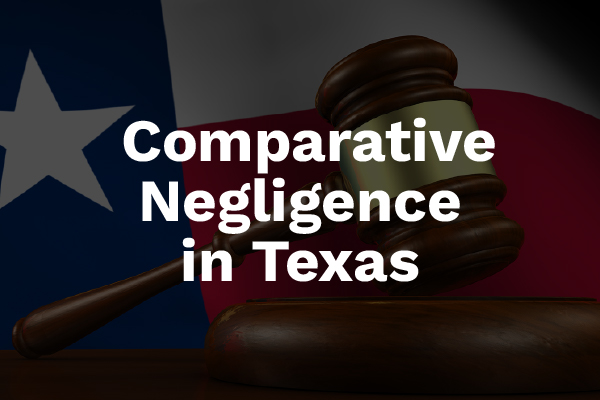
Table of contents
- Understanding Texas Comparative Negligence Laws
- Application of Comparative Negligence in Texas Personal Injury Cases
- Texas Specific Considerations: Comparative Negligence in Practice
- Case Studies: Real-World Applications of Comparative Negligence
- Strategies for Proving and Defending Against Comparative Negligence Claims in Texas
- The Role of a Skilled Dallas Personal Injury Attorney in Comparative Negligence Cases
- Additional Resources:
Like every Monday morning, a young lady named Debbie gets up, gets dressed, eats a quick breakfast, grabs her keys, and heads out the door. She starts her car, checks her GPS to see if there is a route to work to help her avoid traffic, and pulls out of the driveway.
A million thoughts are running through her head this morning. Her mother’s birthday is this weekend, she has a mile-long chore list, and she promised her coworker that she would stay late to help her finish that report they need by Wednesday. As she approaches an intersection, her phone rings. It is her mother. She reaches over to pick it up off the seat to answer the call. Her light was green, and the intersection looked clear, but suddenly it wasn’t. In the few seconds she took her eyes off the road, the car trying to turn left suddenly decided to abandon that plan and go straight. They pull straight into the intersection, and she plows into the back corner of the other car. Both cars rocket forward, airbags are deployed, and Debbie, in the chaos, loses her phone in between the seats.
With car accidents like this, determining fault is usually pretty straightforward. The driver who changed their mind at the last minute and failed to look for oncoming traffic would have been at fault. However, since Debbie decided to take her eyes off the road to answer the phone, she could potentially also be considered at fault.
When multiple parties are at fault in an accident, it can be confusing to determine how to seek compensation and who is responsible for paying those damages. In these cases, you will want an experienced personal injury attorney on your side. The personal injury attorneys at the Hernandez Law Group, P.C. have created this guide to review Texas’s comparative negligence laws and show how cases like Debbie’s would be handled. Here is what you need to know.
Understanding Texas Comparative Negligence Laws
Under the Texas Civil Practice and Remedies Code, all cases where multiple parties may be considered at fault will be looked at through modified comparative negligence. Modified comparative negligence, also known as comparative fault, is used to determine proportional responsibility for an accident. It does this by establishing the following:
- A claimant (the injured party) may not recover damages if their percentage of fault is greater than 50%.
- If the claimant’s percentage of fault is not greater than 50%, the claimant is eligible to recover damages, but their award will be reduced by the amount of fault they are responsible for.
Application of Comparative Negligence in Texas Personal Injury Cases

If we go back to our story about Debbie from earlier, we can see this law in action. If Debbie, who was driving while distracted, were found responsible for 25% of the accident, then her total compensation would be reduced by her percentage of fault (her total compensation would be reduced by 25%). So, if Debbie would have received $200,000 in damages, but the court placed 25% of the fault on her, she would only receive $150,000.
Would the Other Driver Be Able to Sue for Compensation?
No. Under Texas state law, if a claimant is found to be more than 50% responsible for an accident, they will not be able to claim any compensation.
What About Insurance Companies? Does Comparative Negligence Work for Insurance Claims as Well?
Technically, the principle of comparative negligence only applies to personal injury lawsuits, but sometimes insurance companies try to use a more informal version of this law. In comparative negligence, a judge hears the case and reviews the evidence to determine who is at fault for what percentage of the accident. However, insurance companies are not held to the same laws in determining fault and a possible settlement.
Instead, an insurance company will look at a case, understanding that there is a good chance it could end up in court, and do their best to cover their bases. Most insurance companies do their investigation of the accident and try to follow the comparative negligence law to get a better understanding of how much the settlement could be. If they find that the insured party is responsible for less than 50% of the accident, they may refuse to pay the injured party for damages. Based on their findings, they may also conclude that their client is only partially at fault and offer a reduced settlement.
Texas Specific Considerations: Comparative Negligence in Practice

It is important to understand that while Texas is a modified comparative negligence state, it also follows a doctrine known as proportionate responsibility. This doctrine states that fault should be allocated to all parties involved in the accident, including the plaintiff. The court or the jury will determine each party’s percentage of responsibility based on the evidence presented. This is one of the reasons why having a knowledgeable personal injury attorney on your side is so important to ensure you are not being bullied into accepting less compensation. A personal injury attorney can also provide evidence that accurately shows what happened in the accident so the fault is divided appropriately.
Case Studies: Real-World Applications of Comparative Negligence
Comparative negligence can be applied to almost any personal injury case in Texas. Here are a few examples that our team has faced:
- Car Accidents: If both drivers or multiple drivers were acting negligently, such as one was distracted driving and another was experiencing road rage, then the court or jury will determine the percentage of fault. For example, in Debbie’s case, she was found to be 25% at fault for the accident, and the other driver was found to be 75% at fault.
- Slip and Fall Accidents: Slip and fall cases are naturally tricky in the State of Texas due to their frequency. However, in cases that do end up in court, the plaintiff may be considered to have contributed to their accident if they weren’t paying attention to where they were going or purposely ignored warning signs.
- Work Accidents: Most work accident cases result from improper training, poor working conditions, or poorly maintained equipment. In some cases, it could be argued that the employee was partially to blame for the accident due to their failure to act responsibly. For example, a construction worker is using a boom lift, and the boom lift malfunctions, causing the arm to drop and the employee to fall out of the basket. However, the employee in the basket failed to use the safety harness. Because of this, they were considered partially at fault for the accident, as they would have reduced the injuries had they been wearing the proper safety equipment.
Strategies for Proving and Defending Against Comparative Negligence Claims in Texas

Several key factors must be shown to prove that the defendant bears more of the fault than the plaintiff in a comparative action claim. These factors include the following:
- Evidence of Negligence: The court or jury will look at the evidence presented to determine the amount of negligence on the part of each party involved. This evidence includes the following:
- The official police report of the accident
- Medical reports of the injuries and proposed treatment
- Pictures of the accident
- Credibility of the Witnesses: Witness testimony is critical in establishing the facts surrounding a case. It also helps the judge or jury determine each party’s level of responsibility.
- Expert Opinions: In some cases, an expert witness will be called in. These witnesses are either accident reconstruction specialists or medical professionals who can explain how the accident happened and whether or not negligence was involved.
- Contributory Actions: The judge or jury will also consider any contributory actions on the plaintiff’s part. (Contributory actions are any actions the plaintiff may have taken that contributed to the accident or their injuries.)
The Role of a Skilled Dallas Personal Injury Attorney in Comparative Negligence Cases
It is common to be overwhelmed after an accident, from trying to handle the damages to recovering from injuries, and it may seem like your entire life was turned upside down in a matter of moments. Whether you’re dealing with insurance companies or trying to figure out how to seek compensation, having a personal injury attorney on your side can make all the difference. The attorneys at the Hernandez Law Group, P.C. have represented thousands of individuals in Dallas, Abilene, and Amarillo, Texas, and we can help you. Whether we can settle your case outside of court or we need to take the fight to court, you can rest assured that every decision we make will be in your best interest. Contact our team today for more information on comparative negligence laws or to get a free no-obligation consultation to review your case.
